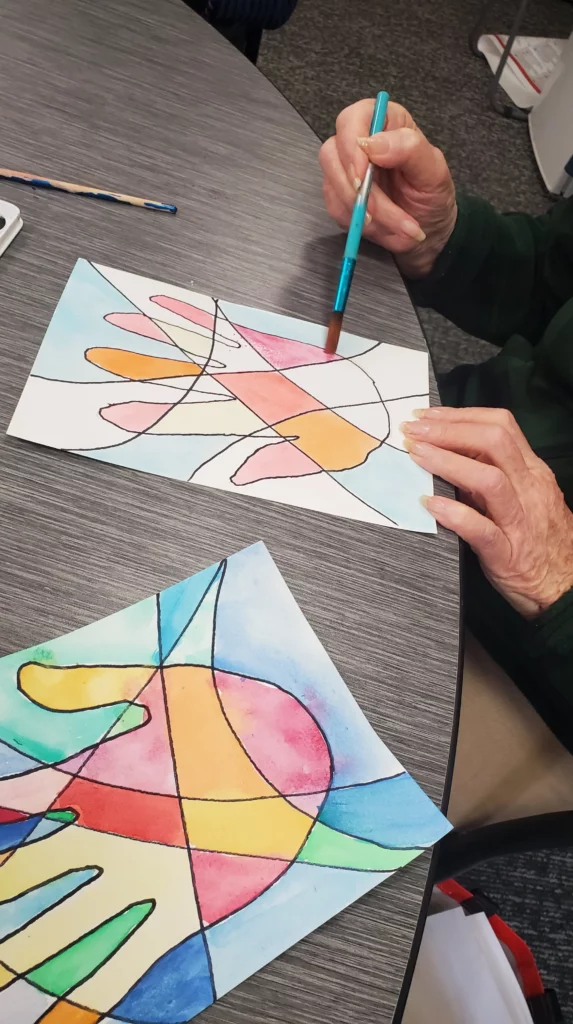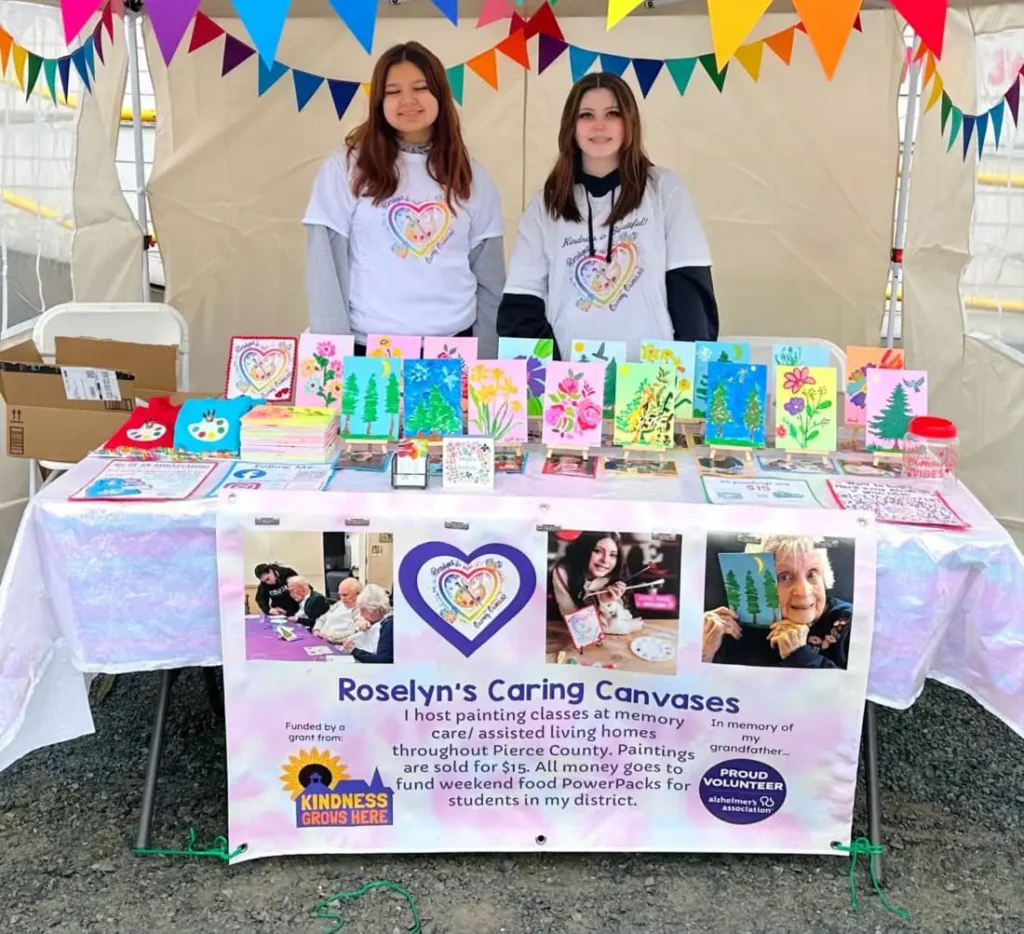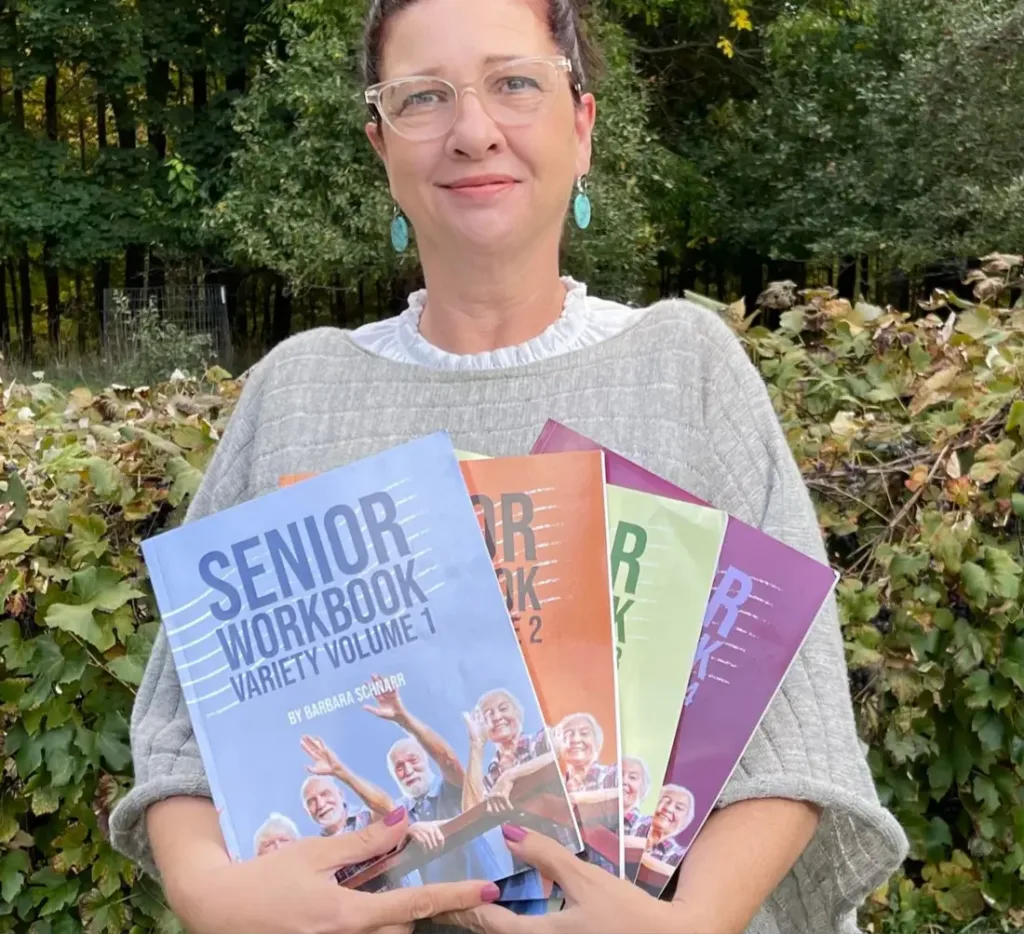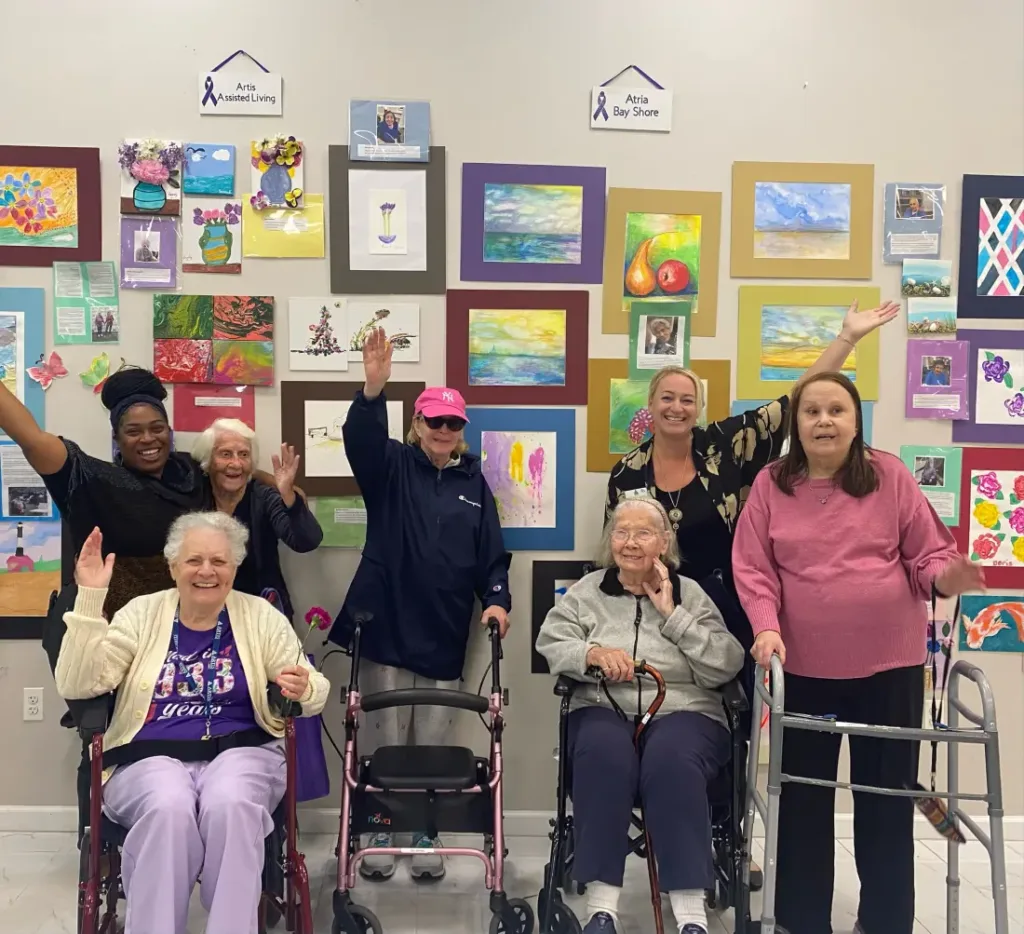What does Silverbright Circle offer to those living with dementia?
Silverbright Circle, LLC, offers art therapy specializing in dementia care. Art therapy could include creating art, discussing works of art, and visiting museums or gardens to discuss and be in awe of art in non-clinical settings.

My approach can be defined as person-centered and community-oriented with a deep belief in the unifying power of the arts. When I design an arts program for people living with dementia, I utilize knowledge about the potential symptoms of various dementia disease processes and bring artworks or art media that I myself find captivating and inspiring in a positive way. The enjoyment of the art or artmaking is truly shared.
For example, I lead monthly public programs on Zoom via the Folk Art Reflections program of the American Folk Art Museum, every first Thursday of the month from 1-2 EST and have made a series of interactive videos for the Reflections program available on YouTube.
How did you find yourself starting a company related to dementia art therapy?
In 2000, I was hired as a private caregiver to a woman living with Alzheimer’s disease. I didn’t know when I was hired that the experience of enjoying art, music, and walking the neighborhood with her would set me on the meaningful and purpose-driven career path I am on now.
I earned a master’s degree in creative arts therapy in 2007 and worked for over 10 years at a community-based social adult day program. During that time I started my business, Silverbright Circle, LLC, in order to develop programs for people living with dementia. I have been fortunate to continue to expand my business and be hired by wonderful organizations like The American Folk Art Museum and the Alzheimer’s Association, New York City chapter, as well as private institutions and families.



What inspired you to become an art therapist?
The early experiences, going to museums and concerts together, I had as a private caregiver showed me that enjoying the arts was beneficial for her mind and her emotional well-being; it was also an excellent way for the two of us to deepen our connection. We were both equally engaged and equally valid in answering the simple questions that the arts inspire, like “What do you notice?” and “Do you like this?” In the realm of art, we were equals and the caregiver/care-receiver hierarchy was less important. The power of this way of connecting is what inspired me to become an art therapist.
How has working on dementia-related art changed you?
My bachelor’s degree is in fine art and I specialized in ceramics. Even though I loved the atmosphere of art school, I had a feeling that the meaning of art for me was in the connections I made with others. I was not destined for a traditional path of an artist, showing in galleries and selling artworks.
It took several years of life experience after art school to find my way as an art therapist in dementia care, and I have learned some big life lessons from enjoying the arts with people living with dementia. Here’s one: Curiosity is way more energizing and life-affirming than “smarts.” Would you rather walk around a museum with a smarty-pants who tells you about every piece, or a genuinely inquisitive soul who opens your mind to questions and your own sense of wonder? The arts and dementia both are suited to placing a high value on curiosity.
How has the work been received?
There is a wonderful thing that can happen when a group of people living with dementia are gathered together for a visit to an art museum, let’s say. The group discusses an artwork in terms that are personal, visceral, honest and way deeper than the usual docent-guided tour. The wonderful thing happens when other museum visitors, not part of the group, stop and listen. They ask themselves “What kind of a group is this?” They ask themselves, “Wait, how do I feel about that artwork?” The subjective playground of art and discussion opens up to include everyone. The participants of my groups know that their ideas and observations are just as valid as a curators’.
This work is dedicated to: I realized recently that all of what I do is dedicated to family and professional caregivers. I see the ways you adjust and repeat, adjust and repeat, and often get worn thin by your duties. I also see beautiful moments when you and your loved one are taking in the mystery of an artwork and formulating your own associations, opinions, and connections with it. In those moments you and the person (or people) you care for are on equal footing; standing side-by-side, regarding the artwork with your deepest human selves. I feel honored to be part of those moments.
Find more from Elizabeth Gronke and Silverbright Circle, LLC, on the website.















